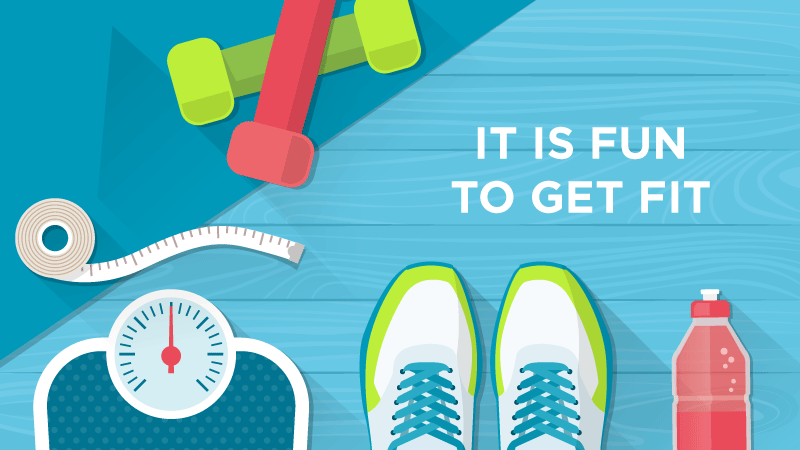Exercise not only has physical benefits but many mental and emotional benefits as well. This article will detail why exercise is important, the benefits associated with getting regular exercise, ways to maintain an exercise program, and possible risks associated with exercise and when to see your doctor regarding these risks.
By Sara Lindquist, MD, Internal Medicine and Geriatrics

Why exercise is important
Physical inactivity is associated with poor health outcomes. Evidence suggests that a sedentary lifestyle may be a stronger predictor of early death than other risk factors such as smoking, high blood pressure, and diabetes. Additionally, studies have shown that extended sitting is an independent risk factor for mortality. The good news is that you can control this risk by being physically active.
The number of minutes spent being physically active each week is a key determinant of health. The United States Physical Activity Guidelines recommend that adults age 18 and older participate in a minimum of 150 minutes of moderate-intensity physical activity (such as a brisk walk) each week. That is 30 minutes per day 5 days a week. Alternatively, research has shown that you can get the same benefits with 75 minutes of vigorous activity (such as running) a week. That is 15 minutes per day, 5 days per week.
There are different types of exercise, each with its own set of benefits. Generally, it is a good idea to incorporate different types of activity into your exercise routine to get a wide range of benefits. Additionally, doing a variety of exercise can help protect against overuse-type injuries. Types of exercise include:
- Endurance training. This is typically aerobic exercise such as brisk walking, running, biking, or swimming.
- Traditional strength training such as weight lifting or using resistance machines or bands.
- Dynamic flexibility training to improve mobility and muscular endurance such as yoga, pilates, or tai chi.
- Circuit training which incorporates a mix of strength and aerobic training.
- Functional fitness training. This involves training the body for activities performed in daily life.
The benefits of exercise
Regular exercise has wide-ranging health benefits including it:
- Lowers your risk of heart disease, stroke, high blood pressure, and type 2 diabetes.
- Improves your cognition and sleep.
- Lowers your risk of dementia such as Alzheimer’s Disease.
- Improves mental health, lowers your risk of anxiety and depression.
- Slows weight gain.
- Reduces your risk of falls and fall-related injuries.
- Improves bone health.
- Improves physical function and quality of life.
- Improved energy.
Additionally, exercise also helps to build the following skills:
- Agility—the ability to change direction with speed and precision.
- Balance—the ability to maintain an upright posture.
- Coordination—the ability to perform tasks smoothly and accurately.
- Power—the ability to perform work rapidly.
- Reaction time—the ability to react quickly.
Exercise risks
The benefits of exercise generally far outweigh the risks of being sedentary. However, with exercise comes the risk of injury such as a strained or sprained muscle or joint, or heart problems such as an arrhythmia (irregular heart beat), heart attack or cardiac arrest. It is a good idea to consider discussing starting an exercise program with your doctor if you are not currently physically active, particularly if you have a history of heart problems, high blood pressure, diabetes or kidney disease. Additionally, you should stop exercising right away and call your doctor if you get any of the following symptoms with exercise:
- pain or pressure in your chest, arms, throat, jaw or back
- nausea or vomiting
- feeling like your heart is fluttering or racing very fast
- feeling dizzy or faint
Tips for success
If you think you don’t have time to fit exercise into your busy schedule, try to incorporate activity into your daily life such as taking the stairs instead of the elevator, parking further away from the door, or taking a longer route when walking from one place to another. The American Heart Association website has great tips about how to increase your physical activity.
Thirty minutes of daily exercise can be broken up into three 10-minute intervals, and while 5 days of exercise a week is recommended, exercising 1-2 times per week is better than none at all.
To help stick with an exercise regimen consider the following:
- Follow a simple regimen. Start slowly with a simple walking program, for example.
- Set attainable goals. If you have been inactive or minimally active, strive for walking 10 minutes 3 times a day instead of running for a mile. Work your way up as you go.
- Interact with others such as in an exercise group or class.
- Exercise in a supervised setting such as a gym or community center rather than at home as this may improve your chances of continuing long term.
Consider signing up for a Juniper class. Juniper offers Tai ji Quan: Moving for Better Balance, and SAIL (Stay Active and Independent for Life). Tai Ji Quan is an exercise program that also improves balance and body alignment thereby reducing your risk for falls. SAIL is a fitness program or adults that improves strength and balance.